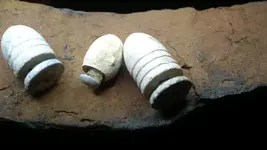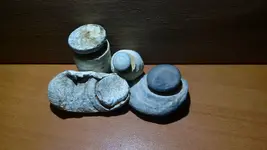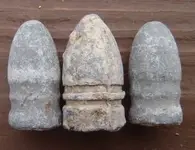I've dug civil war lead bullets in highly acidic swampy/wet soil which corroded the bullets down as badly as yours. In certain environmental conditions, Tannic Acid from centuries of decaying vegetation can accumulate in the soil, to a strength that slowly "eats" lead (and brass buttons, etc) which lay in that soil for 150 years.
For example, in the civil war bullet collecting community, we occasionally have to advise new collectors that there never was such a thing as a .54-caliber Williams "Bore-cleaner" bullet, despite what some Ebay sellers claim. Yankee Ordnance-production records show the Williams bullets were only manufactured in .58-caliber. The "undersized" ones are simply acidic-soil-corroded .58s. Here's a photo showing two corroded so-called .50-caliber CS Gardner minie-bullets (which also never actually existed).






